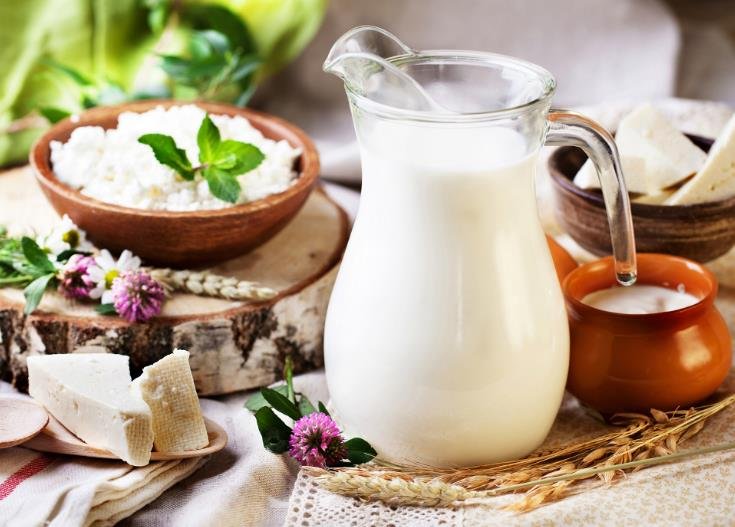As a seasoned food enthusiast, I’ve encountered numerous queries about food safety and consumption. One such query that often pops up is about oxidized potatoes. Many people are left wondering whether these slightly discolored tubers are safe to eat or not. This article aims to provide you with comprehensive information on this subject, so you can make informed decisions when it comes to consuming oxidized potatoes.
Have you ever asked yourself, “Can I eat oxidized potatoes?“. The straight answer to your question is, yes, you can eat oxidized potatoes. Oxidation in potatoes is a natural process that occurs when they are exposed to air, causing them to turn gray or brown. Although the discoloration might look unappetizing, it doesn’t pose any health risks. In fact, the taste of the potato remains largely unaffected by this process. So, if you stumble upon an oxidized potato in your pantry, there’s no need to throw it away. Instead, continue reading to learn more about how you can make the most out of your oxidized potatoes!
What Does Oxidation Mean in Potatoes?
When we talk about oxidized potatoes, we’re referring to a natural process that occurs when the flesh of a potato is exposed to air. This exposure triggers a series of chemical reactions, leading to the change in color from white or yellow to a grayish-brown hue. The term ‘oxidation’ is derived from this process because it involves the transfer of electrons from the potato to the oxygen molecules present in the air.
The phenomenon of oxidation is not exclusive to potatoes. It can be observed in various fruits and vegetables like apples, bananas, and avocados. However, in the case of potatoes, it is more noticeable due to the stark contrast between their natural and oxidized colors. While this may make the potatoes appear less appetizing, it’s important to note that oxidation does not impact their edibility or nutritional value.
According to a study published in the Journal of Food Science, oxidized potatoes retain their nutrient content, including essential minerals and vitamins. The research also revealed that the antioxidant levels in potatoes might even increase during the oxidation process, providing an unexpected health benefit. So, while an oxidized potato might not win any beauty contests, it’s still a nutritious food option.
The Process of Potato Oxidation: A Brief Overview
The oxidation process in potatoes is a series of chemical reactions that occur when the potato’s flesh is exposed to air. As soon as you peel or cut a potato, this process begins. The peeled or cut surface of the potato reacts with oxygen in the air, causing the potato to change color over time.
This color change is due to an enzyme in the potato called polyphenol oxidase (PPO). When the PPO comes into contact with air, it oxidizes the phenolic compounds present in the potato, resulting in a variety of melanins that impart a brownish-gray color to the potato.

Can You Eat Oxidized Potatoes? Unveiling the Truth
It’s interesting to note that the rate of oxidation can vary depending on the type of potato and environmental factors. For instance, higher temperatures and humidity levels can speed up the oxidation process. Additionally, certain types of potatoes have higher levels of the PPO enzyme, making them more prone to oxidation. Research has shown that russet potatoes, for example, are more likely to oxidize than other varieties due to their high PPO content.
How Does Oxidation Affect the Taste of Potatoes?
One might assume that the discoloration caused by oxidation would have a significant impact on the flavor profile of potatoes. However, this is not the case. Oxidation primarily causes a visual change in potatoes, turning their flesh from a fresh white or yellow to a less appetizing gray or brown.
While some people report a slightly bitter taste in heavily oxidized potatoes, this is typically not noticeable unless the potato has been left exposed to air for an extended period. The mild change in taste is due to the formation of melanins during the oxidation process.
In general, the taste of oxidized potatoes remains largely unchanged. They can still be used in a variety of dishes without affecting the overall flavor. This is good news for those who don’t want to waste food and are looking to make the most out of every potato, oxidized or not.
Safety Concerns: Are Oxidized Potatoes Safe to Eat?
When it comes to the safety of consuming oxidized potatoes, there’s good news. The oxidation process in potatoes is a natural occurrence and does not render the potato unsafe to eat. Despite the change in color, the nutritional value of the potato remains intact.
This is not to say that all discolored potatoes are safe to eat. It’s critical to distinguish between potatoes that have oxidized due to exposure to air and those that have changed color due to spoilage or disease. If a potato has green patches, sprouts, mold, or a foul smell, it’s best to discard it as these are signs of spoilage which can lead to foodborne illness.
Lastly, it’s worth noting that while oxidized potatoes are safe to consume, they may not always present the most appealing option, especially if the discoloration is extensive. If you’re preparing a dish where the appearance of the potatoes matters, you might want to prevent oxidation by storing cut potatoes in cold water until you’re ready to use them.
Tips to Prevent Potato Oxidation
Potato oxidation is a natural process that occurs when the flesh of the potato gets exposed to air, leading to a discoloration. While this doesn’t affect the safety or nutritional value of the potatoes, it can impact their appearance, making them less appetizing. Thankfully, there are several measures you can take to prevent or slow down the process of potato oxidation.
Step 1: Limit Exposure to Air The key to preventing potato oxidation is limiting their exposure to air. As soon as you peel or cut a potato, try to use it immediately. If you’re not going to use it right away, cover the cut surfaces with a damp cloth or paper towel to reduce air exposure.
Step 2: Store in Cold Water If you’ve peeled or cut more potatoes than you need, you can store the unused portions in a bowl of cold water. This will not only prevent oxidation but also keep the potatoes fresh. Just make sure to change the water every few hours.
Step 3: Use Acidulated Water For even better results, you can add a bit of lemon juice or vinegar to the water. The acidity in these substances helps slow down the oxidation process.
Step 4: Proper Storage If you have whole, unpeeled potatoes, store them in a cool, dark, and well-ventilated place. Avoid storing them in the fridge as the cold temperature can turn the starch in potatoes into sugar, altering their taste and texture.
By following these steps, you can keep your potatoes looking fresh and appetizing, ready to be used in your favorite recipes. Remember, proper storage and quick use after peeling or cutting are your best defenses against potato oxidation.
Practical Ways to Use Oxidized Potatoes
Oxidized potatoes, despite their discoloration, are perfectly edible and can be used just like fresh potatoes in a variety of dishes. However, because the appearance of oxidized potatoes may not be as appealing, it’s a good idea to use them in recipes where their color will be masked or won’t matter.
One great way to utilize oxidized potatoes is to incorporate them into dishes where they’ll be mixed with other ingredients. For instance, you could use them to make mashed potatoes, potato salad, or a potato casserole. In these dishes, the grayish-brown color of the oxidized potatoes will be less noticeable, and the taste will remain unaffected.
Another option is using oxidized potatoes in recipes that require cooking methods like boiling, baking, or frying. These methods can help to reduce the discoloration and improve the appearance of the potatoes. For example, making french fries or baked potato wedges from oxidized potatoes can result in a delicious dish where the oxidation is barely noticeable.
Lastly, remember to always practice good food safety habits when handling and preparing oxidized potatoes. Ensure they’re properly cooked to avoid any potential health risks, and discard any potatoes that show signs of spoilage. With these tips in mind, you’ll be able to make the most out of every potato, even those that have oxidized.
Conclusion
Oxidation in potatoes is a natural process that occurs due to exposure to air. While it may change the appearance of the potatoes, turning them from a fresh white or yellow to a grayish-brown, it doesn’t impact their nutritional value or safety. In fact, you might be pleasantly surprised to learn that oxidized potatoes can still be used in a variety of delicious dishes.
So, the next time you see an oxidized potato, don’t be quick to discard it. With the right preparation and cooking methods, you can turn it into a tasty meal. Remember, food waste is a global issue, and every small step towards reducing it counts. Happy cooking!
Frequently Asked Questions
[faq-schema id=”1483″]
















